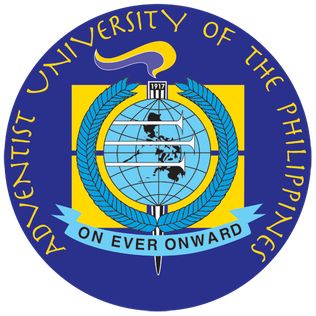Academic Term
June-October 1st Sem 2025
Proverbs 7:7: And beheld among the simple ones, I discerned among the youths, a young man void of understanding,

June-October 1st Sem 2025
| Label | Tag | Indicators | Subfield | Content |
|---|---|---|---|---|
| Leader | 000 | 04195nam a2200217 a 4500 | ||
| Date and Time of Latest Transaction | 005 | 20240222103507.0 | ||
| General Information | 008 | 030624s2002 000 0 eng d | ||
| Agency-assigned identifier | 035 | _a | 78AF0D4CA63311D796D3000795BD7209 | |
| Agency-assigned identifier | 035 | _a | (0000000000)65043 | |
| Main Entry - Personal Name | 100 | 1 | _a | Mariano, Penina Y. |
| Title | 245 | 1 0 | _c | Penina Y. Mariano. |
| Title | 245 | 1 0 | _a | Needs assessment for computer literacy as perceived by schools administrations & elementary teachers / |
| Publication, Distribution, etc. (Imprint) | 260 | _c | 2002. | |
| Phys Description | 300 | _a | xii : 167 Leaves : | |
| Phys Description | 300 | _b | ill. ; | |
| Phys Description | 300 | _c | 27 cm. | |
| General Note | 500 | _a | [Thesis] M.A. Ed. Adventist University of the philippine 2002. | |
| Summary Note | 520 | _a | Technology is here to stay. Hence, wise choices about the appropriate place of Computers in education are not only a matter of educational decisions but fundamental Choices about the kind of society we shall Have, about the social implications and Ethical responsiveness of our institutions to the majority of our future citizens, and to The teachers who need to see the tremendous expansion of knowledge through computers. The purpose guiding this study is to assess the needs for computer literacy. Among school administrators and elementary teachers in Central Luzon Conference.(1) What are the perceptions of CLC school administration and elementary teachers towards computer, (2) To what extent are computers utilized as educational tools?, (3) To what extent are computers utilized as recreational tool?, (4) To what extent are computers being utilized in different academic subjects?, (5) What are the factors that hinder the attainment of computer literacy as perceived by elementary teachers and school administrators?, (6) What are possible solutions to the attainment of computer literacy as perceived by elementary teachers and school administrators?, (7) Which of the selected demographic characteristics (educational attainment, current work assignment, years of service, number of seminars attendant, number of computers) of the respondents differentiate their perceptions regarding the need for computer literacy?, (8) Is there a significant difference in the perception of users and non-users in the attainment of computer literacy?This study employed a descriptive survey method. A total of 120 respondents (105 elementary teachers and 15 administrators) from Adventist elementary schools all over Central Luzon Conference participated in this study. The instrument was constructed, pilot-tested and validated for the required date. Eight research questions, incorporating two research hypotheses, were posed in this study. | |
| Summary Note | 520 | _a | Means and standard deviations were utilized for answering the five research questions while Kruskal Wallis H-test and Mann-Whitney U-test were used to test the two null hypotheses. FINDINGS: 1.The respondents "agree" that there is a need for computer literacy with grand mean of 3.8504., 2.Computers were "rarely" used as educational tools with a grand mean of 2.4349, 3.Computers were "rarely" used as recreational tool with a grand mean of 2.0467, 4.The extend of using computers in different academic subjects was addressed as "rarely" with a grand mean of 2.010095, 5.The respondents perceived five factors that hinder computer literacy grouped and labeled as: funding with 42.97% of variance, competence with 7.63% of variance, accessibility with 5.98% of variance, computer anxiety with 5.07% of variance, and technophobia with 3.84% of variance as extracted by factor analysis, 6.The respondents perceived that the solutions to the attainment of computer literacy were "moderately attained" with a grand mean of 3.1060, 7.Based from .05 probability level, finding showed that there is no significant difference on the perception regarding the need for computer literacy considering some selected demographic characteristics (educational attainment, current work assignment, years of service, number of seminars attended, and number of computers). | |
| Subj: Topical | 650 | 7 | _2 | sears |
| Subj: Topical | 650 | 7 | _2 | sears |
| Subj: Topical | 650 | 7 | _a | Dissertations, Academic. |
| Subj: Topical | 650 | 7 | _a | Computer Literacy. |
| Subj: Curriculum | 658 | _a | Master of Arts in Education. | |
| Subj: Curriculum | 658 | _2 | local | |
| AE: Pers Name | 700 | _a | Agnazata, Bayani N., | |
| AE: Pers Name | 700 | _e | Adviser. | |
| Electronic Location and Access | 856 | 4 | _u | http://jldmlibrary.aup.edu.ph/opac/thesis_abstract/pdf/Mariano,%20Penina%20Y.pdf |
| Electronic Location and Access | 856 | 4 | _z | Abstract (PDF) |